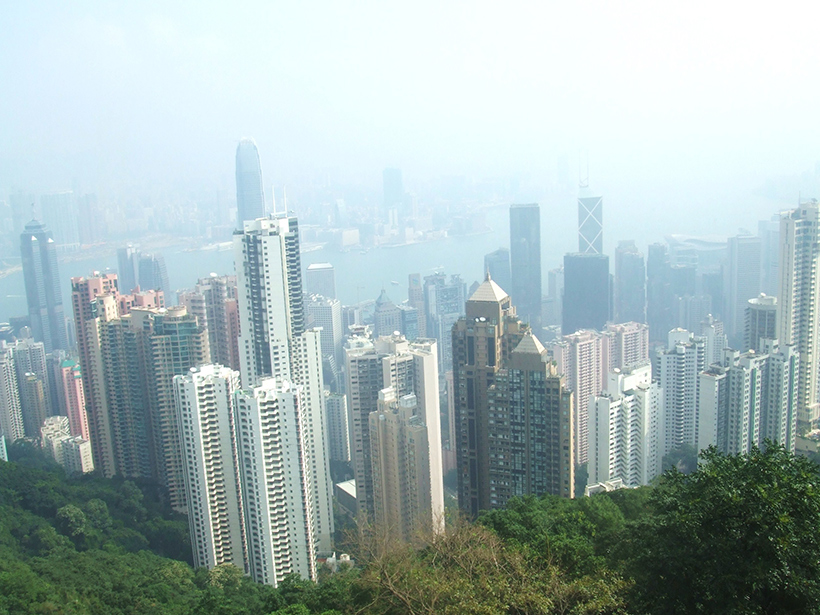Source: Journal of Geophysical Research: Atmospheres
Previous studies have shown that the presence of nitryl chloride (ClNO2), a gas that forms during the night when particulates containing chloride react with combustion-related nitrogen oxide compounds, can increase the concentrations of ozone the following day. Ozone is a potent greenhouse gas and widespread air pollutant linked to decreased lung function. However, because of the small number and limited extent of ambient measurements made to date, the global significance of ClNO2 is still poorly understood.
To help address this knowledge gap, Wang et al. report the first measurements of ClNO2 in the upper planetary boundary layer over the city of Hong Kong and the adjacent Pearl River delta—a region that frequently experiences severe haze and high levels of anthropogenic pollutants, including ozone. The team measured the concentrations of ClNO2 and associated chemical compounds atop 957-meter-high Tai Mo Shan, the highest point in Hong Kong, for 12 consecutive nights in the fall of 2013. The readings included the highest concentrations ever reported in the literature for ClNO2—4.7 parts per billion by volume (ppbv)—and its chemical precursor, dinitrogen pentoxide (7.7 ppbv). The readings also showed elevated concentrations of both compounds on 6 of the 12 nights.
Using a series of models based on these measurements, the researchers traced the source of the compounds to heavily polluted air from major industrial and urban areas to the north of the study site. Their calculations indicate that the presence of these compounds can increase peak daytime ozone concentrations by 5% to 16% and can enhance the total production of ozone the following day by up to 41%.
These results, which are several times higher than previous model calculations, emphasize the importance of understanding the role of ClNO2 in different environments and including its effects in models that predict ground-level haze and ozone concentrations. (Journal of Geophysical Research: Atmospheres, doi:10.1002/2015JD024556, 2016)
—Terri Cook, Freelance Writer
Citation:
Cook, T. (2016), Chemical boosts ozone production over southern China, Eos, 97, https://doi.org/10.1029/2016EO053173. Published on 27 May 2016.
Text © 2016. The authors. CC BY-NC-ND 3.0
Except where otherwise noted, images are subject to copyright. Any reuse without express permission from the copyright owner is prohibited.

